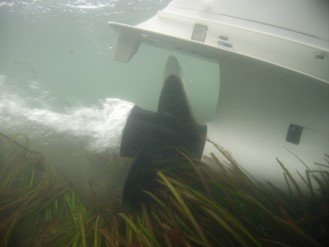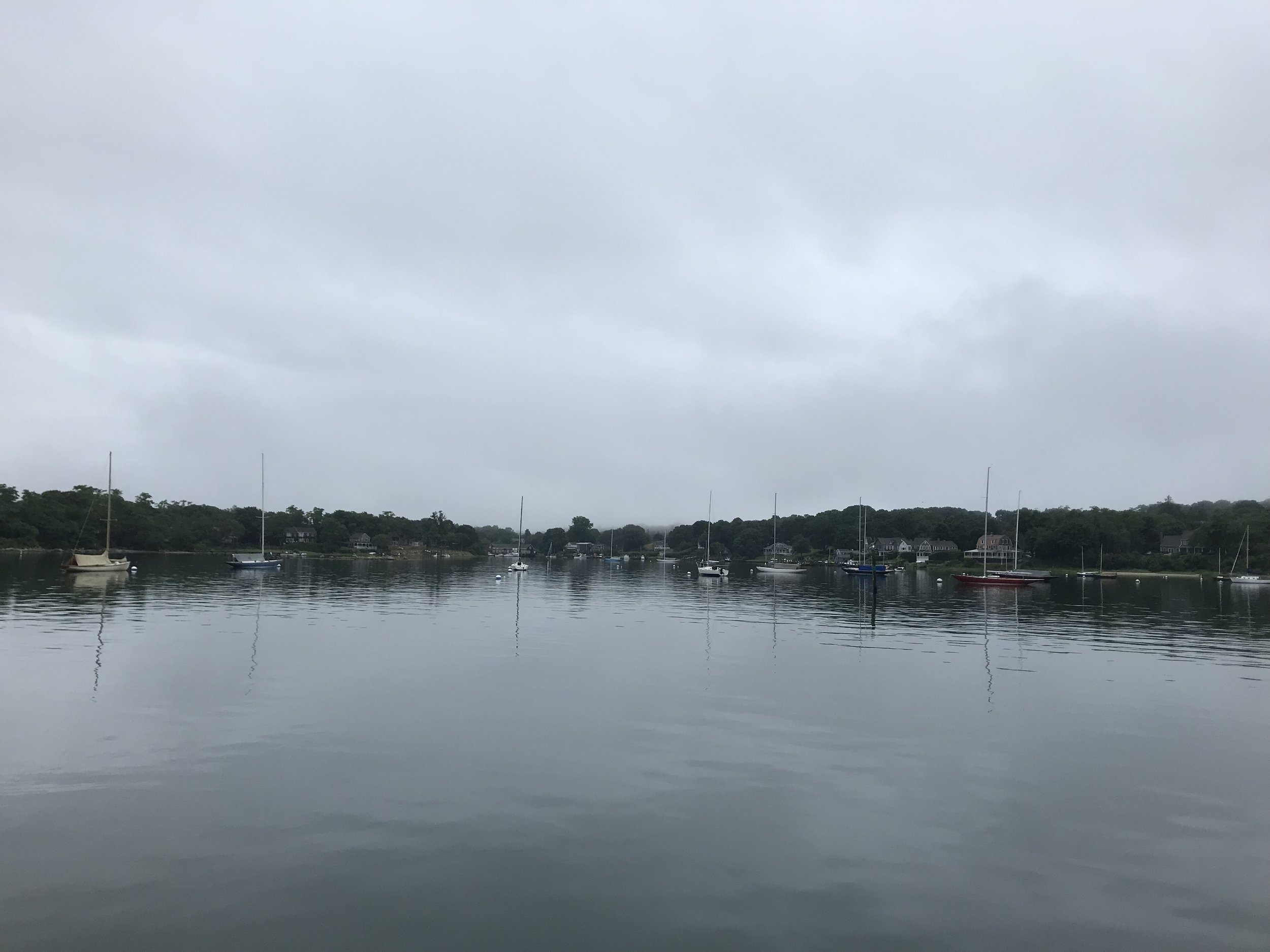
Seagrass Safe Boating
Anchor in the sand
Anchors cause damage in three stages: fall, dragging/lock-in, and retrieval. Most damage occurs during anchor fall and recovery [1, 2] when eelgrass is uprooted. This damage directly affects meadow cover and shoot density [1]. A single anchor can create four square meter bare patches in eelgrass beds [3].
Some anchors cause less damage in meadows than others. Hall anchors cause the most minor damage compared to Danforth and Folding Grapnels [2]. However, the best way to avoid damaging eelgrass beds is to check over the side of your boat for eelgrass before you anchor. If you see eelgrass, carefully navigate your boat to an area without eelgrass before you drop your anchor.
Seagrass Safe Boating
-

Avoid
When you find yourself in the coastal waters of Fishers Island, check if you are in a seagrass area. This could be indicated in maps or on buoys. You can also look for the eelgrass over the side of the boat. Try staying in deeper channels to prevent eelgrass damage.
-

Trim Up
If you find yourself over an eelgrass bed, trim up you motor and idle to a safe depth. Trimming up will save the seagrass and costly repairs to your props and engine!
-

Push
If you run aground or trimming up is not an option, push your boat to a safe depth. Please do not try to use your engine; proceeding under power will damage the eelgrass, disturb the sediments, and damage your motor.
Eco-Moorings
Traditional moorings use a heavy chain that drags on the seafloor around a central anchoring point - usually a cement block. These chains create large bare circles, removing the eelgrass in its path through repetitive scraping and dragging.
Eco-moorings are a particular class of moorings designed to prevent the damage caused by traditional moorings when installed in eelgrass beds.




